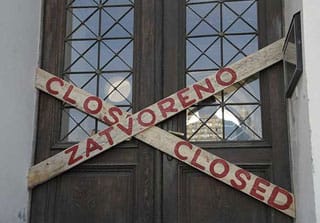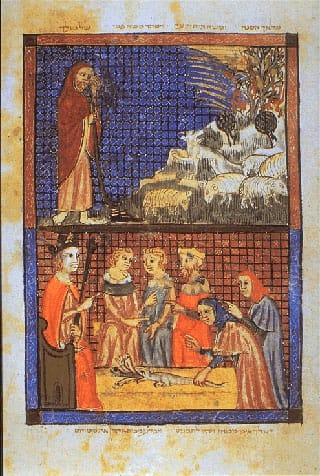Divisive Funding Crisis Shuts Down National Museum of Bosnia
The National Museum of Bosnia and Herzegovina shut its doors last Thursday because of a severe lack of funding. The museum had operated continuously for the last 124 years, even through the Bosnian War in the early 1990s, but a longstanding and infuriating political quagmire have made keeping it ope

The National Museum of Bosnia and Herzegovina shut its doors last Thursday because of a severe lack of funding. The museum had operated continuously for the last 124 years, even through the Bosnian War in the early 1990s, but a longstanding and infuriating political quagmire has made keeping it open currently impossible.
The problems actually stem from the end of the war, when the Dayton Accords split the Bosnian government into two entities, “one for the Serbs; the other a federation of often mutually suspicious Croats and Bosniaks (predominantly Muslims),” according to the Guardian. The paper also has a quote from a report commissioned by the Council of Europe that further illuminates the problem:
After the war the different cultural groups, who define themselves as nations, have all wanted their own national cultural institutions with the Croats and Serbs asserting that the existing institutions, all of which are based in Sarajevo, increasingly represent Bosniaks.
Although there is a central federal government that oversees the two entities, the Associated Press characterizes it as “weak” and adds that there is no ministry of culture. As a result, seven national institutions — the National Museum, the National and University Library, the National Art Gallery, the Historical Museum, the Museum of Literature and Theatre Arts, the National Film Archive, and the National Library for the Blind and Partially Sighted Persons — have existed for years in a political void that leaves them constantly applying for grants and basically begging for money, without any stable funding.

Now things seem to be coming to a head. According to the website cultureshutdown.net, which is devoted to tracking and publicizing the situation, the National Gallery closed earlier this year and is only open for commercial temporary exhibitions; the National Library has no electricity, debts for heating, electricity, and water bills, and employees haven’t been paid yet this year; and the director of a planned national contemporary art museum announced his resignation earlier this year, according to the Guardian, “saying he had nowhere to put a collection.”
Balkan Insight reports that about 100 people gathered at the closing of the National Museum, whose collection includes the famed Sarajevo Haggadah, a 14th-century illuminated Jewish manuscript, plus a 250,000-volume library, folk costumes, Neolithic ceramics, and more. A few students chained themselves to poles inside the building in protest.
An interview with Marica Filipović, the museum’s deputy director, on cultureshutdown.net provides some insight into the direness of the situation. The interviewer suggests about a million alternate sources of funding, and Filipović has a response for why pretty much all of them won’t work. There’s also this depressing exchange:
[Interviewer:] Mr. Busuladžić once said that it was not about great projects, but about museum’s survival. Did media attention from since winter this year bring any significant changes, at least awareness about these problems?
[Marica Filipović:] No.
One can only hope that changes.




